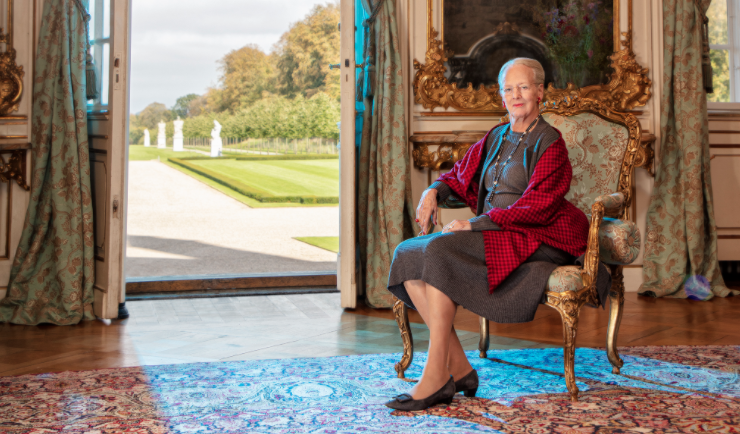
As we continue looking back at the life of Queen Margrethe in celebration of her 80th birthday, today let’s look at some of her royal ancestors.
The monarchy of Denmark is one of the oldest in the world and can be traced back to the eighth century — though with recordkeeping not at its best in those times and the existence of “semi-legendary kings,” it’s entirely possible that the Danish monarchy extends further back.
Gorm the Old
Gorm the Old, who reigned between 936 and 958, is usually considered the first King of Denmark. He is the son of a semi-legendary king named Harthacnut, and one of his lasting legacies is the creation of the oldest-known Jelling Stone.
The Jelling Stones are a series of carved runestones that act as gravestones for Gorm the Old’s wife (Thyra) and Gorm himself (his was raised later by his son Harald Bluetooth). They also act as Denmark’s birth certificate, as they contain its name and details of the country.
Cnut the Great
Cnut the Great reigned over Denmark, Norway, and England at various points in his life. As the Danish king, he reigned from 1018-1035; as the Norwegian king, he reigned from 1028-1035; and as the English king, he reigned from 1016-1035.
He won the English throne through conquest (and took the Scottish throne in 1017) and consolidated his power through Scandinavia by claiming the thrones of Denmark and Norway. When he died, the Danish and English thrones went to his son, Harthacnut III, while the Norwegian throne went to Magnus I.
Margrethe I
Margrethe I was the first female Danish monarch, and she united the kingdoms of Denmark, Norway, and Sweden during her reign, which lasted from 1387 to 1412.
Margrethe I’s reign came in a backwards way, as the daughter of the King of Denmark, she was married to the King of Norway and Sweden (Haakon VI) and bore him a son named Olaf. When Haakon VI died before his son reached his majority, Margrethe became regent. Her son also died without issue, so Margrethe remained on the throne of Denmark despite a grandnephew of age to take the throne.
Known for her wisdom, tact and capabilities as a ruler and diplomat, she was called “The Lady King” in recognition of her efforts. The current queen took her title from Margrethe I.
Christian IV
Since 1513, every Danish monarch — with Margrethe II as the exception — has either been named Frederick or Christian in an alternating fashion. Since she broke the tradition by virtue of being female, Queen Margrethe treated herself as a ‘Christian’ and named her eldest son Frederik to keep it moving forward (and Crown Prince Frederik has continued the tradition as well, with his heir Prince Christian).
Christian IV had the longest reign in Danish history, lasting 59 years from 1588 to 1648, and he was considered one of the most popular and proactive kings in history. He created many towns in Denmark, Norway and Sweden (most of which were named after him, like Christiania, the capital of Norway, which was re-named Oslo in 1925); encouraged arts and culture and turned Denmark into an artist’s haven, inviting the biggest names to the country to perform; and created buildings that still stand, including the Børsen stock exchange; and founded the Danish East India Company.
Christian X
Queen Margrethe’s grandfather reigned throughout the two world wars, from 1912 to 1947 and is renowned for being a symbol of Danish Resistance during the Second World War.
When the Nazis occupied the country in 1940, Christian X rode daily through Copenhagen on a horse with no guards to protect him. On his coat, he wore a Danish flag pin and a pin with the Crown Insignia which became its own symbol of resistance. He also helped the Danish Jewish population.
On his birthday in 1942, Adolf Hitler sent him a long telegram filled with effusive praise for his birthday. The King’s reply was merely, “Giving my best thanks, Christian X,” which greatly angered Hitler and led to the Telegram Crisis. Hitler expelled the Danish Ambassador from Germany and recalled his own Ambassador from Copenhagen. The Danish Parliament was dismissed and replaced with new governors.
Though his popularity rose and fell throughout his life — a low point being the Easter Crisis of 1920, when he dismissed the elected government using a reserve power he’d been given — today he is remembered mostly as a defiant resistance symbol during the Second World War.

